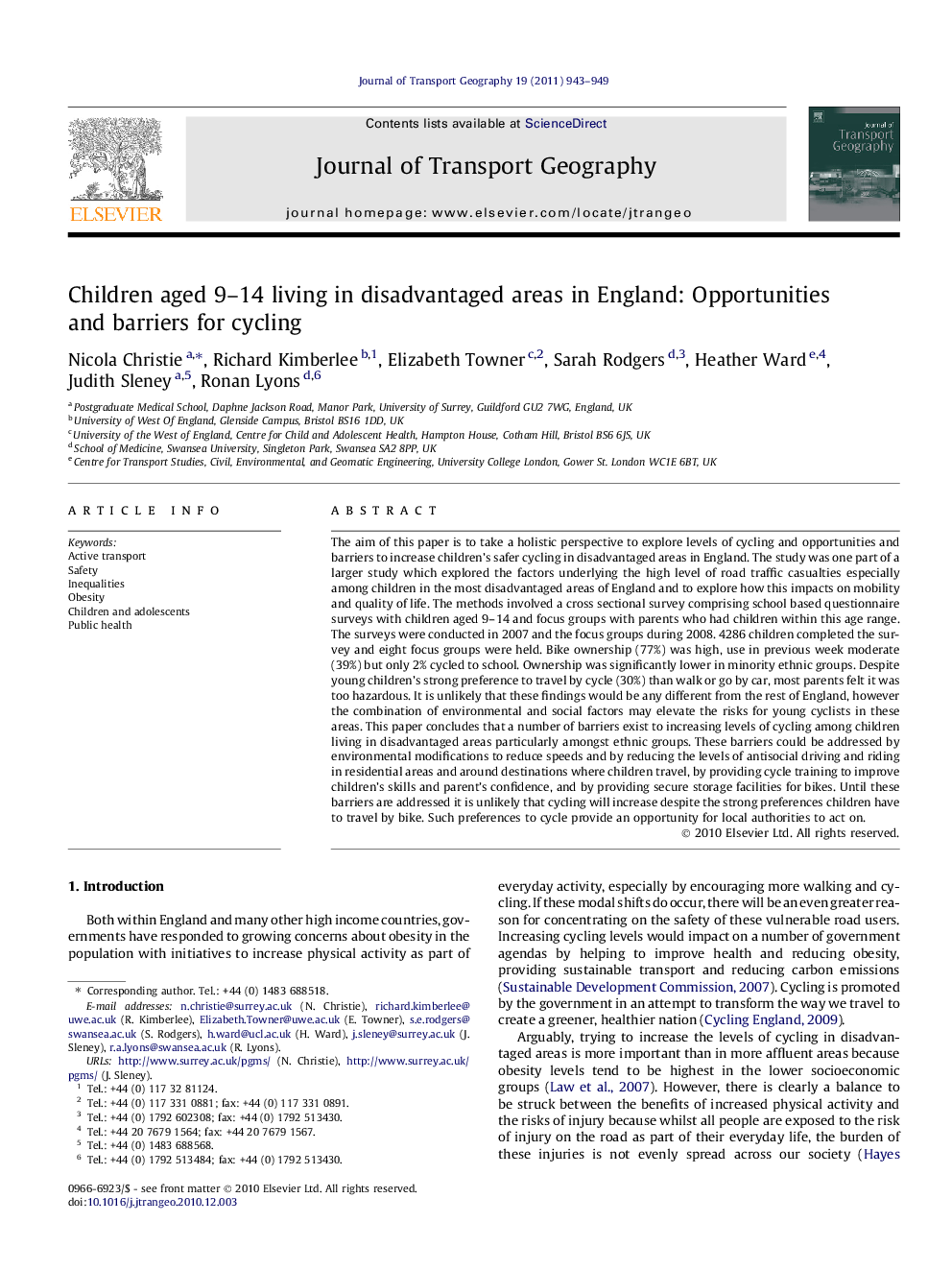| کد مقاله | کد نشریه | سال انتشار | مقاله انگلیسی | نسخه تمام متن |
|---|---|---|---|---|
| 1059527 | 947454 | 2011 | 7 صفحه PDF | دانلود رایگان |

The aim of this paper is to take a holistic perspective to explore levels of cycling and opportunities and barriers to increase children’s safer cycling in disadvantaged areas in England. The study was one part of a larger study which explored the factors underlying the high level of road traffic casualties especially among children in the most disadvantaged areas of England and to explore how this impacts on mobility and quality of life. The methods involved a cross sectional survey comprising school based questionnaire surveys with children aged 9–14 and focus groups with parents who had children within this age range. The surveys were conducted in 2007 and the focus groups during 2008. 4286 children completed the survey and eight focus groups were held. Bike ownership (77%) was high, use in previous week moderate (39%) but only 2% cycled to school. Ownership was significantly lower in minority ethnic groups. Despite young children’s strong preference to travel by cycle (30%) than walk or go by car, most parents felt it was too hazardous. It is unlikely that these findings would be any different from the rest of England, however the combination of environmental and social factors may elevate the risks for young cyclists in these areas. This paper concludes that a number of barriers exist to increasing levels of cycling among children living in disadvantaged areas particularly amongst ethnic groups. These barriers could be addressed by environmental modifications to reduce speeds and by reducing the levels of antisocial driving and riding in residential areas and around destinations where children travel, by providing cycle training to improve children’s skills and parent’s confidence, and by providing secure storage facilities for bikes. Until these barriers are addressed it is unlikely that cycling will increase despite the strong preferences children have to travel by bike. Such preferences to cycle provide an opportunity for local authorities to act on.
Research highlights
► The risk of injury as a child cyclist is higher than average in disadvantaged areas.
► Environmental and social factors pose barriers for children as cyclists.
► Children in disadvantaged areas want to use their cycles more.
► Children from ethnic minority groups are much less likely to own or use a cycle.
► A holistic intervention approach is needed to address barriers for cycling.
Journal: Journal of Transport Geography - Volume 19, Issue 4, July 2011, Pages 943–949